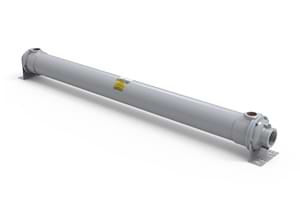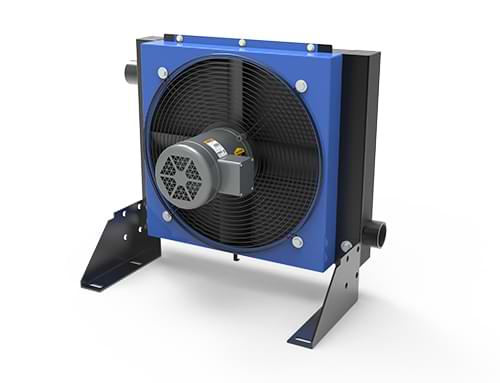Aftercoolers for High-Pressure Applications
Unlike average blasting operations, which typically operate at lower pressures (around 40-100 psi), high-pressure blasting systems can exceed 1,000 psi, often reaching up to 40,000 psi in ultra-high-pressure water jetting applications. These systems are employed in heavy-duty tasks such as removing rust, paint, or scale from metal surfaces, cutting through concrete, or cleaning industrial equipment like heat exchangers and pipelines. The increased pressure enhances efficiency, reduces material usage, and allows for precision in challenging environments.
Applications
- Cooling Capacity: Cooling capacity must match the compressor’s airflow and heat load in high-pressure blasting. Systems over 1,000 psi generate hot air; an undersized aftercooler risks moisture buildup, clogging nozzles, and corrosion. Ensure it sustains dry air for efficient, reliable performance.
- Pressure Rating: The aftercooler’s pressure rating must exceed the system’s psi (e.g., 1,000+ psi) in high-pressure blasting. A mismatch risks leaks or failure. Durable materials like stainless steel ensure safety and longevity under intense conditions, critical for industrial reliability.
- Portability: Portability matters for mobile high-pressure blasting tasks. A compact, lightweight aftercooler with wheels or brackets aids transport without sacrificing cooling or pressure capacity. It ensures flexibility and efficiency across job sites like pipelines or construction.
Water Cooled Aftercoolers
Compressor Cooling
- Fixed or Removable Tube Bundles
- Material Options Available
- Standard and Custom Options

Air Cooled Aftercoolers
Compressor Cooling
- Use Ambient Air to Cool
- Variety of Motor Options
- Standard Pressures of Up To 250 psi

The distinction between high-pressure and average blasting lies in their intensity and application scope. Average blasting, often seen in sandblasting or soda blasting, is suitable for lighter tasks like surface smoothing or delicate material cleaning, where excessive force could damage the substrate. High-pressure blasting, however, tackles robust materials and stubborn contaminants, making it indispensable in industries like shipbuilding, oil and gas, and construction. While average blasting might use softer abrasives like glass beads, high-pressure systems often employ harder media like garnet or steel grit, or rely solely on water in hydroblasting setups.
Aftercoolers play a critical role in high-pressure blasting systems, particularly those using compressed air. During compression, air heats up significantly, often reaching temperatures above 200°F (93°C). This hot, moist air can compromise the blasting process by introducing water vapor, which leads to clumping of abrasive media, corrosion of equipment, or inconsistent blasting patterns. Aftercoolers cool the compressed air post-compression, removing moisture through condensation and ensuring a dry, efficient airflow.
Key benefits of aftercoolers in high-pressure blasting include:
- Equipment Longevity: Reduced moisture prevents rust and wear on blasting nozzles and hoses.
- Consistent Performance: Dry air ensures abrasives flow smoothly, avoiding blockages or uneven application.
- Surface Quality: Minimized water vapor prevents flash rusting on metal surfaces post-blasting.
- Energy Efficiency: Cooler air reduces strain on downstream components, optimizing system performance.
In contrast, average blasting operations may not always require aftercoolers, as lower pressures generate less heat and moisture. However, in high-pressure applications, aftercoolers are non-negotiable for maintaining operational reliability and achieving superior results, especially in demanding industrial settings where precision and durability are paramount.


